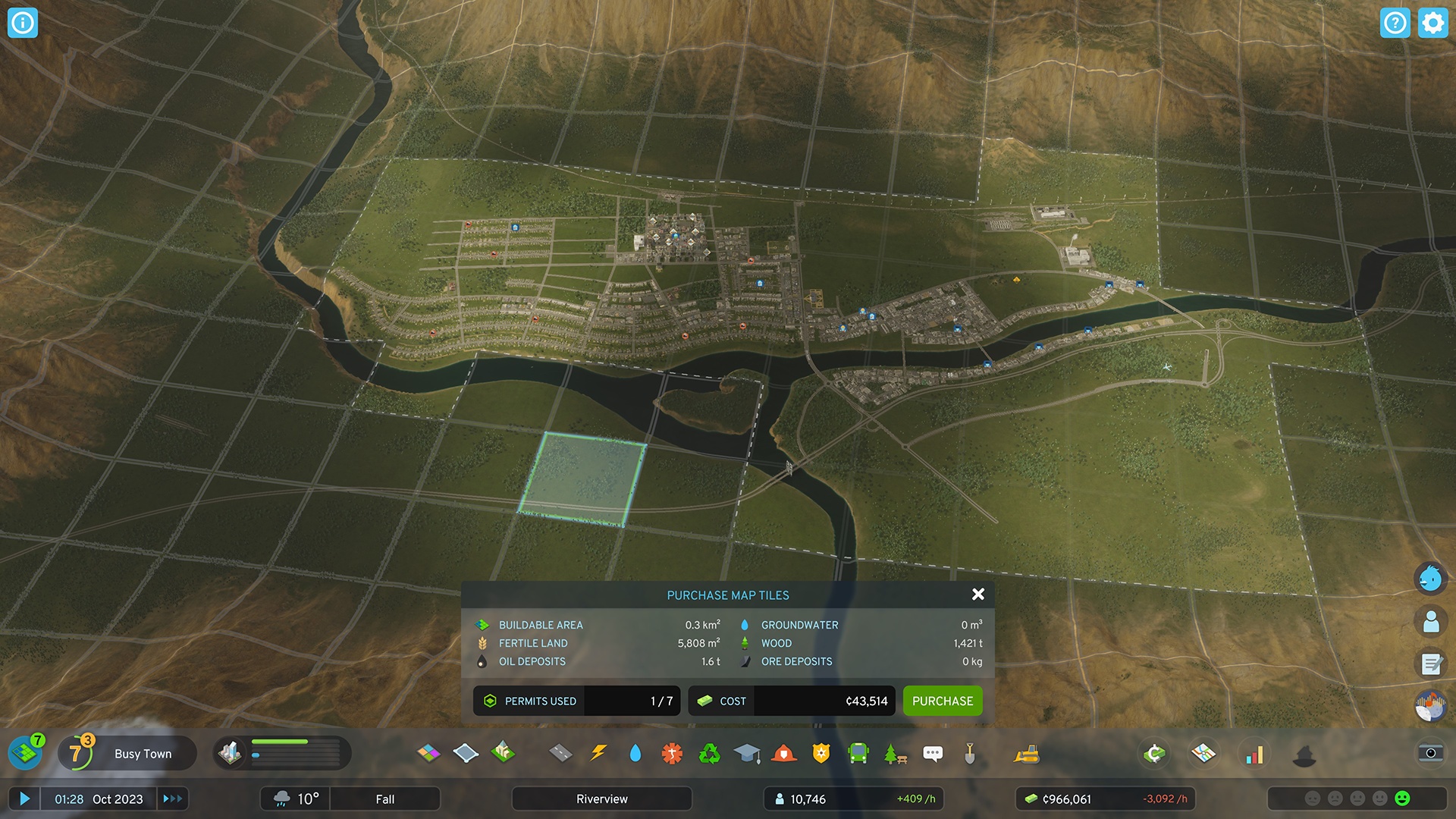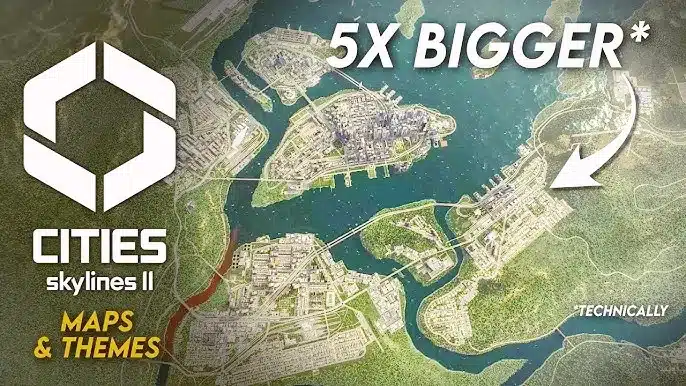The developers of Cities Skylines 2 have talked about the game’s map size for the first time in a blog post. Your cities can get bigger than ever before
Hah, what a pain it always was to have such a beautiful city mapped out in your head in Cities: Skylines…. With magnificent monuments, tranquil residential districts and gigantic motorway intersections – and then all these grand plans failed due to one limiting factor: the map size.
In the first part of the popular city-building simulation, you could only unlock 9 of a total of 25 possible map tiles at the maximum expansion level – which naturally limited your freedom in city building at some point. With a tile size of 1.92km², this resulted in a maximum buildable area of only 33.18km². More was only possible with mods.
Cities: Skylines 2 wants to do things differently here. (In a blog post) the developers have now spoken about the new map system for the first time and, in addition to the size of the map, have also revealed some important changes to the map tiles. We’ll explain it to you:
What’s different?
In the second part of Cities: Skylines, the individual map tiles will be smaller than in the predecessor. However, you will be able to unlock almost all of the 441 tiles in the course of the game. This results in a total possible size of 159km² for your city, around five times as much as in the predecessor.
In addition, the tiles on which you want to build no longer have to be directly connected to each other. This means that you can build suburbs and other small settlements that are not directly adjacent to your city, but lie like isolated islands somewhere on the map.
The height limit… has also been increased. Theoretically, your city can continue to grow on plateaus or in the mountains even if you have already exhausted all free building land on the plains.
What else did the developers reveal?
Of course, the Paradox team has even more new information for you. Parallel to the blog post, the developers published a short YouTube video in which some further innovations are shown. You can see the video here:


